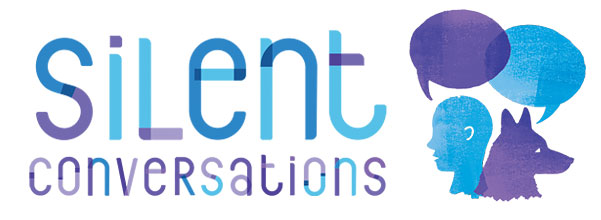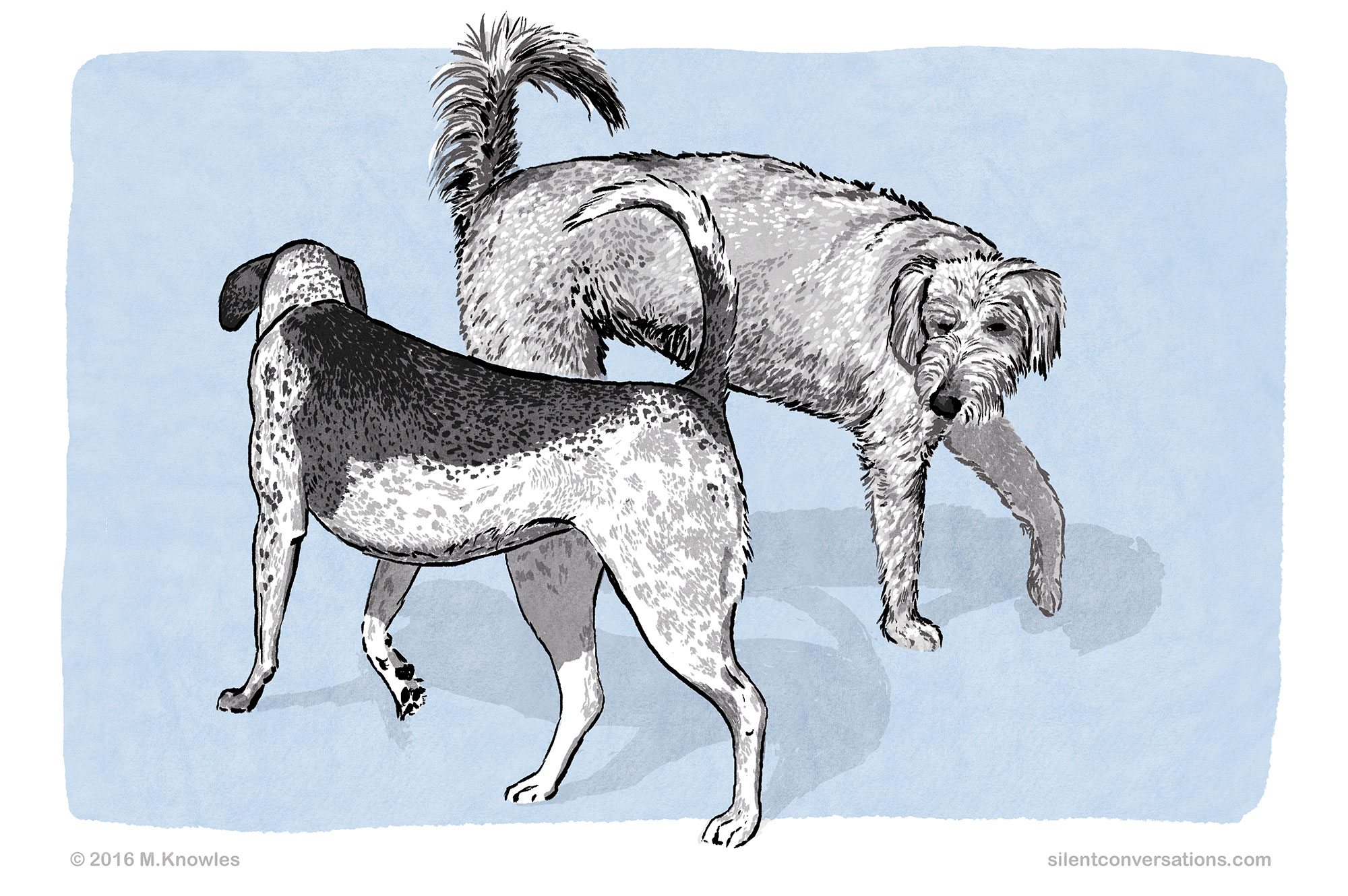
Introduction to Dog Body Language
Dogs are social animals, so communication is key in maintaining a peaceful coexistence with others. Most of dog communication occurs silently through body language. Other language may be louder (barks, whines, growls, yelps, howls and so on) and seem more familiar to our human perception of language. It is likely that before a dog starts to communicate more loudly through sound, there has been some silent body language that has gone unnoticed. Scent could also play a factor in communication; dogs have a phenomenal sense of smell – something we as humans may find difficult to understand fully, as our noses are not as good. The focus will be on dog body language, since this is how the vast amount of communication occurs. Once you start carefully observing your dog, you will begin to notice how often he is speaking. This silent language is very subtle and occurs via deliberate body language signals such as a simple head turn, lip lick, yawn, paw lift, freezing and many more signals. For beginners, it is easier to look for individual body language signals or calming signals, but it is ultimately important to consider the wider picture, observing what the dog’s body as a whole is saying – this may take a bit more practice and concentration. It is important to factor in the context in which the communication is occurring, including the environment and individuals involved. The same body language may have a slightly different interpretation in a different circumstance. Once you start looking at the dog as a whole, you will notice the amount of information that is communicated with each body part and by the entire body.
For example, let’s start by examining the face:
Face and head: Has the head been turned away? What is the position; is it dipping down or is the head high? Are there any frowns or ridges? Eyes: What is the shape? Are they round and large, almond-shaped, or squinty? Are they staring, or is the gaze averted? Do the eyes have a hard stare or a softer look to them? Can you see the whites of the eyes (known as ‘whale eye’)? Are they blinking? Has the pupil size changed?




Mouth: What is the mouth doing? Is it open with the tongue hanging out? Is the dog panting? Is there an explanation as to why the dog is panting in this circumstance? Is the mouth closed? Are the commissures (corners of the dogs mouth) pushed forward or pulled back? Is there any tension in the lips? Does the mouth look short or is it long and loose? Has the dog given any body language signals like a lip lick or a yawn? What are the whiskers doing?
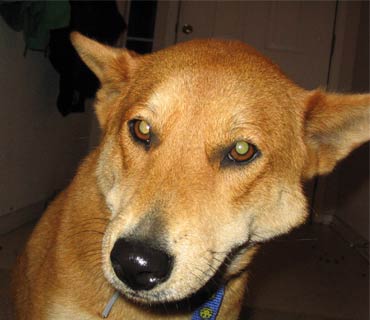

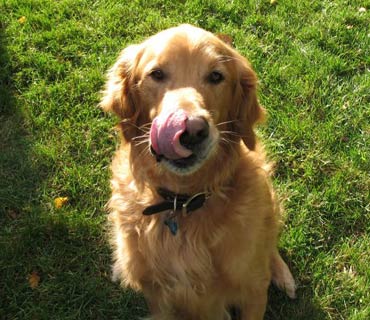

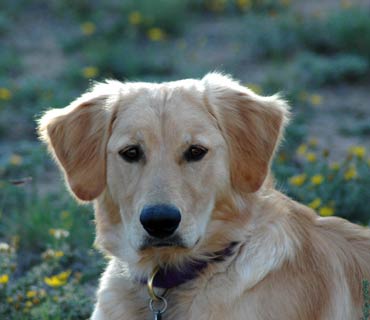
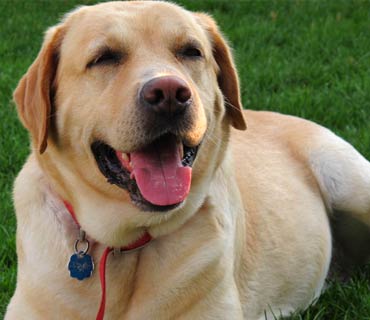

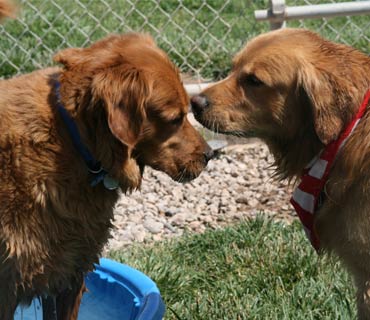
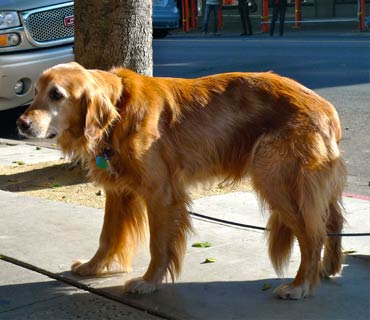

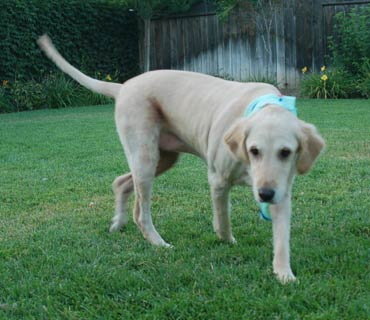
Posture and body position: Is the weight of the body held on the front or back legs, or is it centered? How is the body positioned? Is the body curved or facing head-on? Is the body lowered or is it looking very tall and square? Is the dog standing, sitting or lying down?
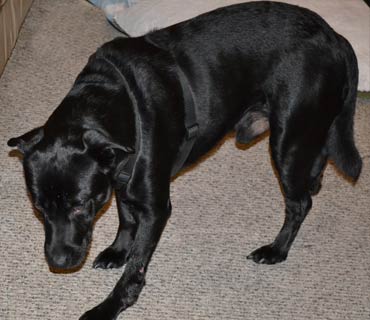
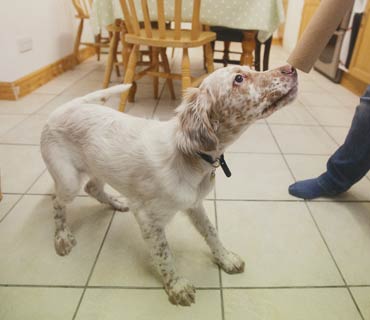

The subtleties to keep in mind when observing body language:
Body Movement: Does it feel like the body is loose and moving easily? Or are there areas that seem stiff? Maybe there is no movement and the dog might be freezing? What is the speed or tempo of the movement – is it jittery or fluid? Has the movement changed and, if so, how?
Sometimes it looks like nothing is going on, but there is actually a lot more happening than perceived: Along with body movement, it is also worth noting how the dog is interacting and using the space he is in. Is the dog moving away from an interaction or moving closer? How much space is there with whomever or whatever they are interacting with? Sometimes small things are ignored that are very important. For example, is the dog freezing or walking away? It may seem as though nothing is happening, but these small signs speak very clearly and are not to be missed. As you hone your skills of observation, you will start to notice each individual piece and begin to put the whole picture together like a jigsaw puzzle.
Differing interpretations, deliberate or unconscious body language: Some body language is deliberate; for instance, a dog may turn his head to say “no thank you” in a non-confrontational manner, or in some interactions he may turn his head to show polite, peaceful intentions to continue the interaction. These are two different interpretations of the same body language in different contexts, but in both instances the head turn is a deliberate body language signal to communicate intentions to another party. Some body language may not be deliberate but might be unconsciously revealing the dog’s internal emotions with regards to a particular situation. For example, if a person hugs a dog, he might show some unconscious body language like a flinch, or he might duck out of the way or freeze, displaying he is uncomfortable with the interaction. Another dog in the same situation may be comfortable communicating directly and will deliberately give a lip lick, head turn and then a big yawn to directly communicate that he is not feeling comfortable with being hugged.
Factor in the skills and the individual: Each dog is an individual and may have a preferred way of expressing itself, depending on its confidence level, skills and experiences. Sometimes a lip lick may be unconscious body language showing the dog may be feeling some conflict of emotions. For instance, my dog starts doing lots of lip licks and his movements get faster when he is walking through an unfamiliar environment. My dog is unconsciously showing his discomfort with the situation through his body language. The equivalent in human terms would be for people to start fidgeting or scratching, or perhaps their body posture might change, they might duck their heads and hunch over a bit – unconsciously showing they are not feeling comfortable.
Consider the observations and context, before offering interpretations: All this communication does not happen in a vacuum, so the circumstances, individuals and environment need to be observed alongside the body language and viewed within context. The best practice when observing body language is just to note everything you see and leave interpretations till last. This allows for an objective view of the whole picture before interpretations are shared. Those interpretations should be supported by unbiased observations.
How to hone your dog body language observation skills:
I hope you are not panicking; this may seem like too much to take in at the moment. Start small and look for body language signals or calming signals to begin with. As a good starting point to learning about dog body language, I would highly recommend reading “On Talking Terms with Dogs : Calming Signals.” by Turid Rugaas. This is a wonderfully clear, easy to read book, offering a decent understanding of dog body language. For further reading see the resources page. This introduction to dog body language should have given you something to consider, although it has not offered explanations as to the possible meanings of individual examples of body language yet. The body language category will provide these explanations and hopefully become a resource, while the dog communication stories might help you understand how the body language is used in context. Once you have read “On Talking Terms with Dogs: Calming Signals”, it would be a good idea to start your observational journey by going to the park, where you can see some dogs interacting. Go on your own (without your dog) so you can concentrate and sit quietly and observe. Take a note pad, write down your observations (write down what you see), remember to leave interpretations till last. Another option is watching videos of dogs interacting; this is a great way to hone your observation skills. Video footage allows you to watch things frame by frame, pause, or watch in slow motion. This makes it so much easier to see all the things you are bound to miss in real life – there is only so much you can take in when watching something happening in front of you in real life. If you would like to practice your observation skills, as an added exercise go through all the images above and list all the body language you see.
Further reading:
Introduction to Silent Conversations

Benefits to Learning Dog Body Language

What are Calming Signals?

